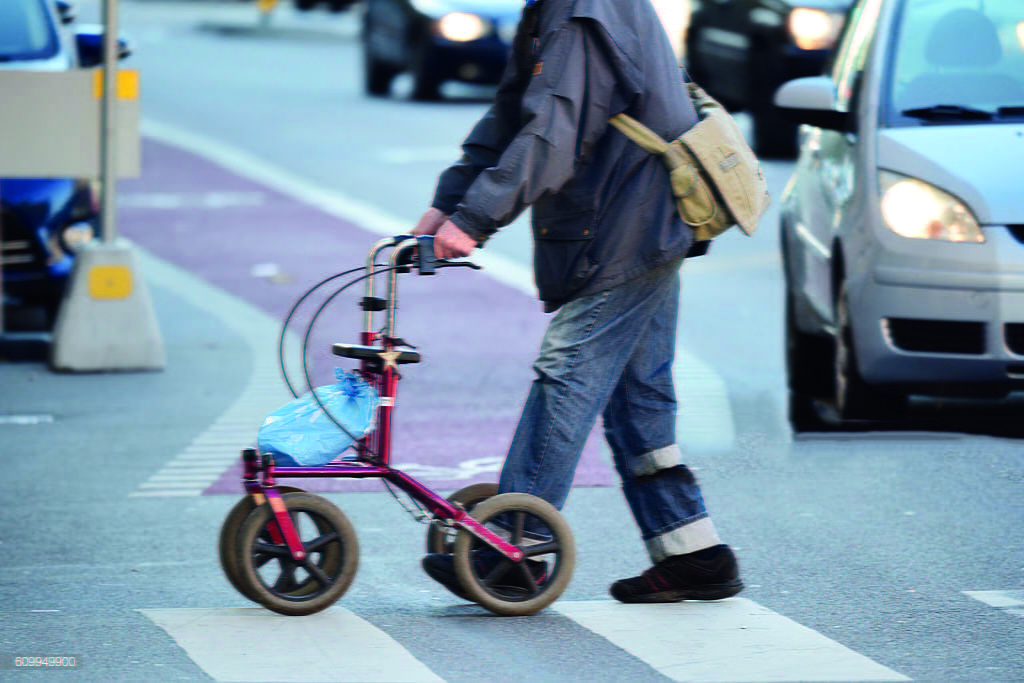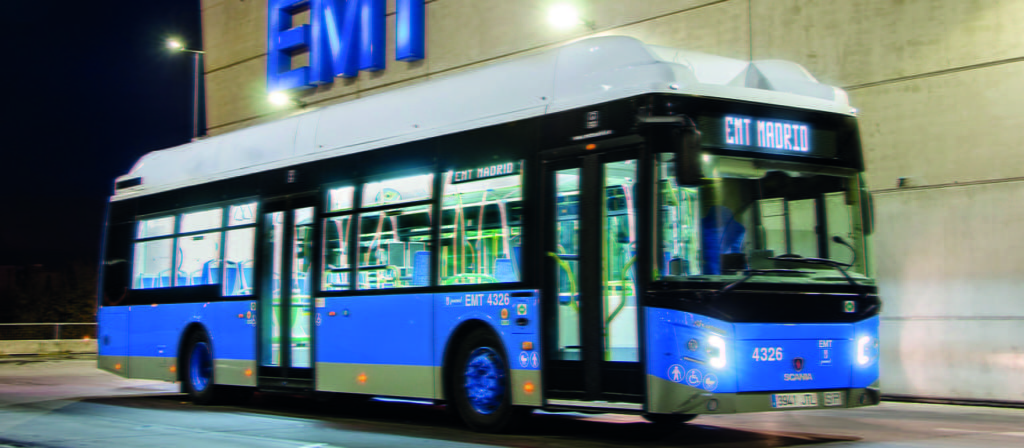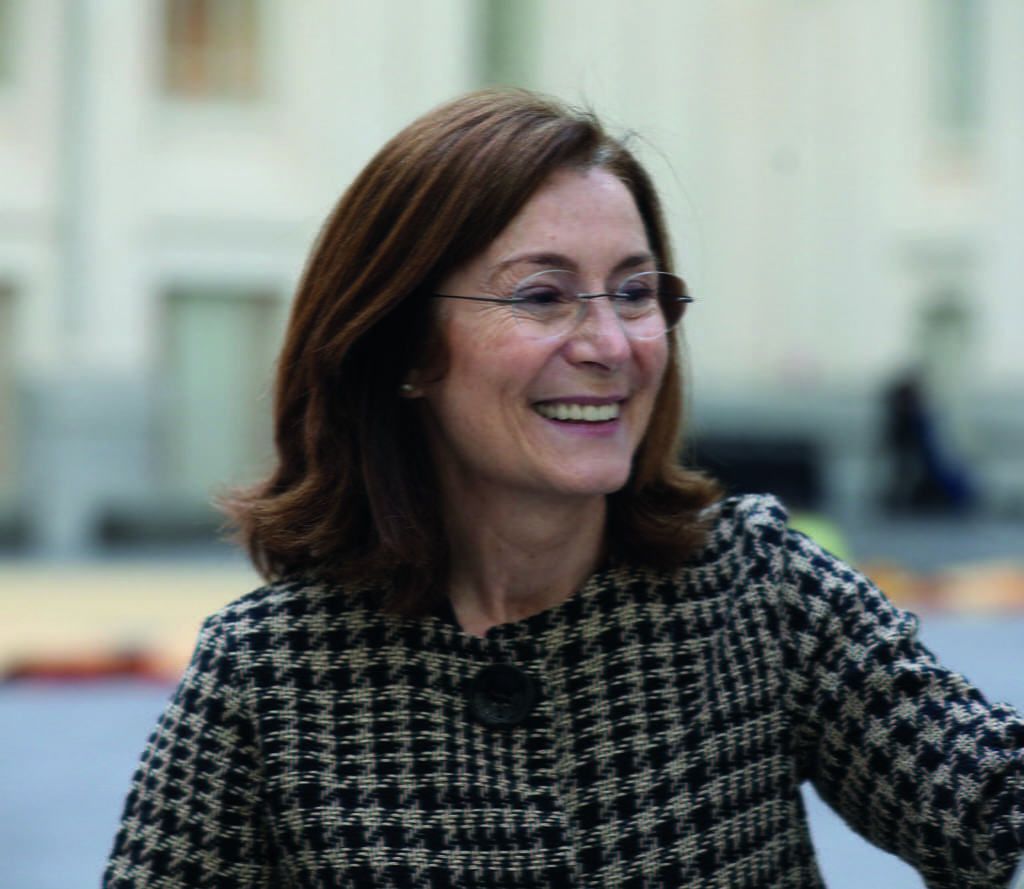Approaching climate change and air quality in a single strategy
Paz Valiente is Deputy Councilor, responsible for Environment, Sustainability and Mobility, for Madrid City Council. Her government developed the comprehensive strategy Plan A, which will change Madrid’s Mobility substantially. She talks to Thinking Cities’ Michel Arnd and Luana Bidasca
MA: Why does the city of Madrid need a new approach such as Plan A, its new air quality strategy aimed at further developing sustainable transport?
PV: Madrid has a problem regarding air quality and commitments to fulfil on climate change goals. With the new municipal government, we decided to develop an ambitious strategy. This is a commitment to the citizens regarding public health and a response to the European Commission that was about to sue Spain for the air quality in Madrid and Barcelona at the European Courts.
"People live longer today, and there are a lot of people that have mobility issues. We have to protect these and other pedestrians and ensure that they are safe"

How does the new approach differ from the previous policies?
We changed Madrid’s approach entirely as we put the focus for the citizens on the health problems attributable to air quality. This was a serious change to the former government’s policy as they were denying the pollution problem. At the same time, we linked the difficulties of pollution with the challenges in urban development. Before, the mindset was that that a pollution curb would be bad for our economy. We changed that and put the problem on the table. We decided to merge approaching climate change and air quality in a single strategy because of the synergies of the measures. We developed Plan A, our municipal plan for air quality and climate change.
How do you see the local economy profiting from the plan?
For the local economy the change of the model brings more opportunities. It means that we decouple growth from the measures, bringing new opportunities of employment and innovation. New technologies, such as Mobility as a Service and IT technology, allow for approaches that we could have never thought of before. Now we can integrate carsharing, motorbike-sharing and bike-sharing. The combination of climate change and air pollution is an opportunity to focus more on resilience in the long term, i.e. mitigating climate risk. Addressing this in the plan is also a warranty for investors. Investments are always endangered by the change of conditions. That we are able to make the city resilient and much more able to mitigate the effects of climate change ensures that investments are protected to whatever happens. This includes alignment with the European policies and the UNFCCC (United Nations Framework Convention on Climate Change) guidelines. We think that this is no risk for the economy, but a good step toward and securing the ambitions of everyone.

How do you see Mobility as a Service contributing to these goals?
Mobility as a Service (MaaS) provides much more public space for people to enjoy recreational activities. Currently, the design of the city is dominated by car ownership. One to five cars per family. If we change the model where we think more about accommodating our needs of mobility and what the city can offer to fulfil these needs. I believe we will find the solution in sharing and public transport. I think that MaaS gives us the concept and the tools to change the city to become much cleaner, much more publicly available to citizens and more nature-based.
Why did you choose to develop your own MaaS approach and app together with the city-owned public transport operator EMT, rather than having a private company coming in and developing it for you?
EMT is a very powerful enterprise and we support local enterprises. We see EMT as a tool for mobility. Before it was often seen as just a bus operator. Now it has become a modern enterprise that is leading and paving the way forward to modern mobility.
EMT is very well connected to European innovation networks, thus it is a knowledge reservoir with lots of technical capacity. For us it is necessary that such an independent body of public interest unites private enterprises who all have their own approaches and agendas. It is a warranty that we work with a body that advocates the public interest rather than the private interest. We certainly respect the interests of the private sector, but it is important that the administration establishes a backup. However, we are not exclusively working with EMT. We see it rather as one means to achieve the mobility goals. We also have a data portal where all information is available for everyone – free of charge. In that sense we look for new proposals and new developments of PPP and new private initiatives. We welcome any mobility provider that is willing to integrate into our daily management of the city.
How do you evaluate the services and collection information to measure their performance?
Information is key for us. For some years, we have been working blindly because we lack information on how people move. The only information we had was from a public mobility survey done by the region. The last edition was in 2005, so you can imagine how mobility changed since then. But the city couldn’t develop its own, since this is a regional competence. All the information we could rely on was that we collected in public buses, taxis and traffic cameras. So we have more or less an idea of mobility in the city but not the accurate picture we would like.
How do you plan to change this?
Having information about movements in a database, such as which trips are made by public bike, carsharing, public transport and so on, is very valuable. We can use it to feed our models and develop our measures. It helps to prioritise measures against each other and adapt measures and policies continuously. We know what can be improved when the information is available. It is the most valuable thing for planning.
Do you require your bike-sharing or car-sharing providers to share information with you?
Every movement and position of a vehicle has to be geolocated and the information shared with us. In that sense we get a picture of how these vehicles move, if they are in the centre or how many are on the periphery. We also understand which trips are made most often and by which transport mode. This information is required to shape the public transport offer much more accurately to the needs of people.
How did you encourage the providers to share that information with you?
We require them by regulation. At first some of them were a little bit reluctant. I don’t understand why but I guess private enterprises sometimes don’t like to share much information with public administrations. But in the end, they were clever enough to understand that this helps to support the transition from the old culture of owning my own car to a much better, cheaper and more efficient Mobility as a Service culture. If they all unite to support that, the cultural change will happen much, much faster. There will be times in the future where they can compete, once everyone is using Mobility as a Service, less people own a car and most of us find their mobility needs in intermodality. Once that is achieved they will all be able to compete freely. But for now they are all required to provide information and the city council is there to help them develop. We are collaborating with them to get the complementary information on the user and the user’s profile. Information about gender and age will allow us to customize our services’ public transport and mobility policy.
How did you the discussions with the providers go?
Our conversation with car-sharing enterprises followed the line I sketched out. The difference now comes with the new free-floating bike-sharing and kick scooters. In contrast to the other modes, we were not relying on voluntary agreements, but needed to establish some rules about the use of sidewalk space. People live longer today, and there are a lot of people that have mobility issues. We have to protect these and other pedestrians and ensure that they are safe. Therefore we did not just ask them to share information but also approved a new bylaw.
We developed to the bylaw to support the Plan A with a legal security, as it is a quite ambitious but also disruptive plan. The city council just approved this completely new mobility bylaw that incorporates Plan A, which came into force in late October.
The new bylaw requires all mobility providers that want to use the sidewalks to ask for an administrative permission for deployment. Permission will be given based on a number of factors, data-sharing being an important one. We can use that information to detect the piling of bikes in the city, for instance. Besides that, we require insurance coverage for users and third parties.
So what will happen if they don’t perform to the agreed standard?
Well first of all, I don’t think that private enterprises have an interest to keep operating if their business model doesn’t turn out to be successful. But for the situation that happened in some other cities where very cheap bikes just appeared, we have developed a mechanism governed by the mobility bylaw. It requires deployers of sharing schemes to recover all their bikes or devices. If they don’t do that, they lose a deposit we require them to leave with the city when they enter.
Do you have already some figures on how users responded to the MaaS application?
The MaaS app is only a beta version and we are just starting all this, so unfortunately we don’t enough information about that at the moment. We hope it will be a success, of course. However, it will always stay voluntary to use it. It is an offer and we think people will like to pick it up, but we don’t require anyone to use it. It is an offer of the public bodies and of course we will also have our benefit from it, but we also see the benefit of connected mobility for the user. We think although it is not obligatory it is good for everyone. In the case of bike-sharing we were much more rigid, as it is easy to establish a business model on these fairly cheap vehicles that is based on data rather than mobility. For cars or more expensive vehicles that is more difficult to achieve. But for MaaS we really don’t see a need for that as it embraces a new approach because there is a collective benefit.
FYI
